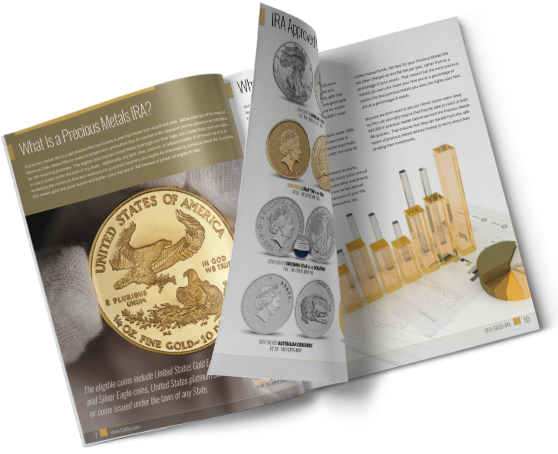
When it comes to your retirement, what is your strategy? Are you putting money into a savings account? Under your mattress? Stocks? 401(k)? Or, have you decided to open an IRA? If the latter is your choice, congratulations. You are already making a great decision regarding your retirement. Now, the next question is, which type of IRA do you want? For many, the decision lies between a traditional IRA and a Roth IRA. But, how do you know which one is the right one for you? Here are a few things that you need to know before making your decision.
Income Limits
With a traditional IRA, anyone who is earning income and is younger than 70 ½ can open an account and make contributions. Roth IRAs, on the other hand, are a bit more restrictive. For example, if you are someone who files your taxes as a single individual, you can’t earn more than $132,000 annually. Married couples can only earn up to $194,000 and still be eligible for Roth IRA contributions. This means that anyone who earns higher than these amounts has no choice but to open a traditional IRA for their retirement needs.
Tax Incentives
The main difference between traditional IRAs and Roth IRAs are in how taxes are paid. In a traditional IRA, the contributions you make are on a pre-tax basis. This means that you don’t pay income taxes on that money at the time of deposit. However, you will begin making tax payments on them at the time of distribution. This means that the amount of money you will receive from your IRA on a monthly basis will be reduced by federal income tax withholding. Contributions to a Roth IRA, on the other hand, are taxed prior to deposit, meaning that your distributions after retirement are tax-free. There are benefits to both approaches, so take the time to speak to a financial planner before opening your account to ensure you understand the tax implications of both types of accounts.
Withdrawal Rules
Another big difference between traditional and Roth IRAs lies in the way money can be withdrawn from the accounts. With a traditional IRA, you cannot take any distribution from your account before the age of 59 ½ without having to pay taxes and a 10% early withdrawal penalty. You also must begin taking regular distributions from your account at age 70 ½. With a Roth IRA, you can take a withdrawal from your account to purchase a home or to pay for higher education expenses without having to worry about paying taxes or paying an early withdrawal penalty. Additionally, if you don’t need the money, you don’t have to begin taking distributions at any specific point, allowing you to continue to grow your savings and even leaving them to loved ones at the time of your death through your will. Your beneficiaries may still owe estate taxes on their inheritance; that is unless Congress acts to remove the death tax before this becomes applicable.
Extra Benefits & Considerations
There are also a few extra rules and considerations that you need to take into account before deciding which account is the right retirement account for your needs. Here is a breakdown of some of those things:
Traditional IRAs:
- Contributing to a traditional IRA allows you to effectively lower the amount of tax you pay in income taxes year over year. This is because this amount is deducted you’re your adjusted gross income on your tax return. This not only lowers your tax burden but may even be enough to put you in a lower tax bracket, which can lower the percentage of tax you pay. You may even be able to lower your income and allow you to qualify for tax breaks like the child tax credit, the student loan interest deduction and more.
- You can withdraw up to $10,000 without having to pay the 10% early withdrawal penalty payment so long as you use the funds to purchase a home. You will, however, still be on the hook for income taxes on the distribution.
Roth IRAs:
- Roth contributions can be withdrawn from the account at any time without having to pay penalties or tax. However, if you withdraw earnings, you will be on the hook for both.
- If you wait at least five years after you make your first contribution to your Roth IRA, you can withdraw $10,000 from your account in earnings (not contributions) without penalty in order to make a home purchase. This is for qualified first-time buyers only.
| When taxed? | Limits? | Withdrawal? | |
| Traditional IRA | Pre-Tax, you pay taxes when you receive distributions | $5,500 (under 50) $6,500 (50 or over); No income limit | Under the age of 59 1/2 pays taxes + 10% early withdrawal penalty. You must start taking distributions at the age of 70 1/2. |
| Roth IRA | Post-Tax, distributions are tax-free | $5,500 (under 50) $6,500 (50 or over)
Income limit: $132,000 (single) or $194,000 (married) in annual income |
You can take a withdrawal to purchase a home or pay for higher education expenses. There is no required time to start taking distributions. |

Ready to Protect Your Retirement Savings?
Get our FREE Self-Directed IRA Guide
With the Goldco self-directed IRA guide, you’ll learn everything there is to know about investing in gold and silver with a precious metals IRA. Whether you’re a long-time precious metals investor or a first-time buyer, our FREE guide will explain the advantages of precious metals IRAs, how to get started investing in precious metals, and how long the IRA process will take.
Once you’ve read our FREE IRA guide, our specialists are available to answer any additional questions you have about opening a gold or silver IRA. If you’ve wished you could invest in gold and silver but didn’t know how, request your FREE self-directed IRA guide today and learn how you can harness the power of gold and silver to protect your retirement savings, grow your wealth, and add much-needed stability to your investment portfolio.

Ready to Protect Your Retirement Savings?
Get our FREE Self-Directed IRA Guide
With the Goldco self-directed IRA guide, you’ll learn everything there is to know about investing in gold and silver with a precious metals IRA. Whether you’re a long-time precious metals investor or a first-time buyer, our FREE guide will explain the advantages of precious metals IRAs, how to get started investing in precious metals, and how long the IRA process will take.
Once you’ve read our FREE IRA guide, our specialists are available to answer any additional questions you have about opening a gold or silver IRA. If you’ve wished you could invest in gold and silver but didn’t know how, request your FREE self-directed IRA guide today and learn how you can harness the power of gold and silver to protect your retirement savings, grow your wealth, and add much-needed stability to your investment portfolio.



